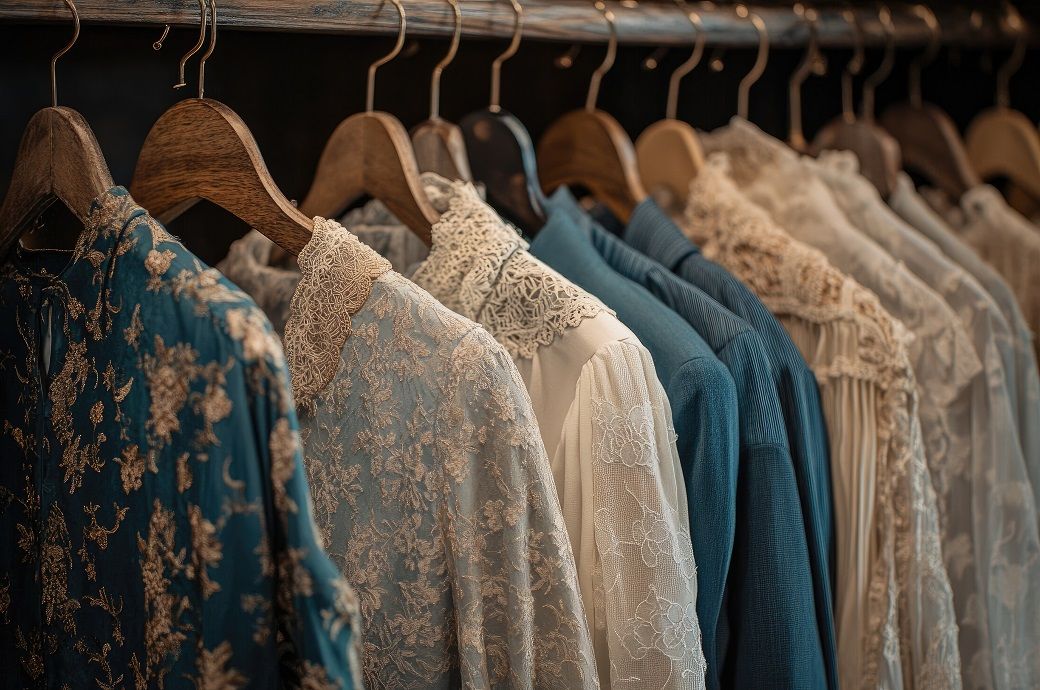Fashion
Lafayette-bred author follows Henri Bendel’s path to fashion

Tim Allis moved to New York from Lafayette after growing up in Bendel Gardens. His journey from the Hub City to the hub of American fashion mirrors the namesake of Allis’ childhood neighborhood — Henri Bendel.
But Allis, who was a senior editor at InStyle magazine for 12 years, first learned about Henri Bendel in his early twenties.
“I drove by it, walked by it, biked by, whatever you could do on two or four wheels my whole childhood,” Allis says about the Bendel house. “But I had no idea who he was. Years later, when I did start digging, my sense was people down here didn’t really know and people in New York didn’t know much about him. How is this guy so lost?”
That was Allis’s impetus for his book Henri Bendel and the Worlds He Fashioned, out this month, uncovering the man behind a name well known in both Lafayette and New York.
“As I did start in earnest researching Bendel, I saw that there were a lot of erroneous facts about him and a lot of myth that had just been repeated and repeated and repeated,” Allis says. “Some things were flat out wrong.”
Allis had his work cut out for him and doubted the viability of a book. Bendel hadn’t left behind any letters, journals or anything personal, and several family members who had known him died while Allis was working on the book.
Allis’s digging spanned 15 years, and he wrote his first book proposal in 2015. He then back burnered the project when he didn’t get a book deal from a major publisher. He picked it back up after talking to UL Press in 2021 and “threw” himself into writing that summer. It would be another two years before he could call the book finished.

Along the way, Henri Bendel on Fifth Avenue, the iconic store that had a footprint in New York’s retail scene for 123 years, closed in 2019. (It was owned by L Brands, now Bath & Body Works.)
“His logo that he sketched all those years ago resonated, but in terms of fashion, it had fallen out of fashion,” Allis says about the closing. He remembers going to have a last look at the flagship store and seeing young women in their twenties taking pictures.
Maybe there really would be a broad audience for a book.
Contradictions and Firsts
Henri Bendel and the Worlds He Fashioned opens with a 1921 painting by Florine Stettheimer titled “Spring Sale at Bendel’s.” It depicts a clearance sale, with women diving over dresses, pulling out scarves and trying on feather-clad hats. Bendel himself stands at the bottom of a long, curving staircase, overseeing the mayhem.
The clearance sale is just one of many “firsts” pioneered by Bendel. He was also among the first to stage fashion shows inside of his store, create house-label items like soaps and perfumes and open satellite stores — not to mention the fact that he introduced Chanel to America.

“He wanted to go backwards in time, but he also seemed to be pretty good at selling the next thing, which is something you have to do in fashion,” reflects Allis.
Bendel was also gay, Jewish and a Southerner — not an easy combination, no matter where you live. He adored Paris, and many people thought he was French. He even changed his name from “Henry” to “Henri” at some point.
He wasn’t openly gay, but he didn’t hide his sexuality either.
He had two longtime companions, one who inherited his estate in Lafayette, but he also kept up appearances by having his half-sister Emma and her children come and live with him at his home on Long Island. He converted to Christianity from Judaism, possibly as another means to blend in with the elite, Allis speculates in the book.
“He has all this propriety, and he was Southern, so you add another layer of propriety, and then he was born in the 1800s, so you add another layer, and then he was gay,” Allis says. “He didn’t choose to write his autobiography. He did give a lot of interviews and had a syndicated column, but it was about fashion. He kept his private life private. His image was very controlled.”
Walking the line between speculation and fact, Allis succeeds in getting to the “heart of Henri” and uncovering those parts of his private life without resorting to gossip or innuendo.
“Seeking Henri Bendel requires imagining Henri Bendel and reading between the brown and white stripes of his legend. Also to marvel at his range and take note of his contradictions …,” writes Allis.
How is Bendel connected to Lafayette?
Bendel was born in 1868, when what would become Lafayette was known as Vermilionville. His parents had a dry goods store on the first floor of their home on Washington Street, but when he was 6 years old, his father died suddenly.
Employee Benjamin Falk stepped in to run the business and eventually married Bendel’s mother Mary. Mary and Benjamin recognized and encouraged Bendel’s artistic talent as a child and enrolled him in a local private school. At age 12, he was sent to St. Charles College in Grand Coteau. It was here that his career in fashion may have begun to take shape, as he “tended to the Jesuits’ ecclesiastical vestments,” Allis writes.
When he was home from school, Bendel helped with the family business, which now included a clothing store, furniture store, funeral parlor and Falk’s Opera House. Allis calls this experience “an advanced degree in the art of selling,” and Bendel’s mother gets credit as a smart businesswoman who influenced her son from a young age.
Armed with a college degree at 16, Bendel received $1,500 from his mother to go out on his own. He ended up in Raceland, working as a clerk at a plantation store. He then moved on to clerk at a store in New Orleans and finally Morgan City, where he worked at Red Star dry goods with one of his cousins. He came to acquire the store and was able to focus his interest on millinery, or hat-making, as he had access to rare feathers through the business.

“It had to be here, then, in little Morgan City, that ‘Henri Bendel, Milliner’ was born,” Allis writes.
Bendel also would have known who else was buying large orders of feathers: New York City. It would take a while for him to get there, but his marriage to New York City divorcee Blanche Lehman in 1894 introduced him to Lehman Bros., importers and manufacturers of fancy feathers. His role in his wife’s family business was in buying and selling at a much greater volume than he was used to in little Morgan City. Blanche died just a year later, possibly during childbirth, but Henri stayed in New York City, setting his future career path in motion.
“He was a tough businessman, a very bottom-line businessman, and yet he wanted that customer satisfaction, and he wanted that personal touch,” says Allis about what would become Bendel’s retail legacy.
“He was sometimes wrapping packages. In the early days, he was decorating the store windows. I loved that idea that he was this super businessman but also super artist. That duality I think is not typical; to be so strong in both zones I think makes him very special.”
In the book, Allis goes on to trace the trajectory of Bendel’s career from milliner to syndicated fashion columnist to boutique store owner. Bendel’s frequent trips to Europe, especially Paris, provided him with personal knowledge of new shades of colors, dress trends and, of course, hat styles.
“Suddenly Henri was something beyond a top wholesale milliner in America’s fashion capital; he was a tastemaker, with an expanding audience,” Allis writes.

This was just 11 years after his arrival in New York City. His flagship store — Bendel’s — opened in 1906 on Fifth Avenue. He sketched out what would become his iconic pattern of brown and cream stripes to be used on awnings, wrapping paper and letterhead, but even he couldn’t have predicted the staying power Bendel’s would have.
When Bendel died in New York City in 1936, he had just returned from a trip to Lafayette during which he spoke at Cathedral School and Mount Carmel, and corresponded with Tabasco scion E.A. McIlhenny about camellias, bamboo and wisteria for his mansion by the river. The Great Depression had greatly affected women’s spending habits before Henri Bendel’s death, but Bendel’s would live on long after the man himself.
Back on the rack
Coming in at 229 pages and with almost 300 pictures, Henri Bendel and the Worlds He Fashioned is a hardcover coffee table book laid out in a magazine style with sidebars for added drama.
Despite questioning the book’s viability, Allis tells the story of Henri Bendel through 12 chapters that include everything from his background to his pride of place, love of France and legacy. Yet, he still worries about what he might have left out and research gone unfinished.
“There were some things I still wanted to look into, but I had this naive idea that I had most of my material,” he says. “Even at the end, there were still things I wanted to mention in the book, but the doors were closing.”

Allis is hoping for a grassroots effort in getting the word out about the book, not just regionally, but in New York and in Bendel’s beloved Paris. And if people come out of the woodwork with more stories or a long-sought-after letter penned by him, that’s OK too.
Looking back, Allis believes the book was always meant to be published in Lafayette.
“I think it’s such a natural fit,” he says. “Henri was so loyal to Lafayette to his dying day that it should be with Lafayette. He just thought of this as home.”
Henri Bendel and the Worlds He Fashioned releases Sept. 24 from UL Press. Louisiana events planned for the book’s release include a talk at Cavalier House Books (formerly Beausoleil Books) Downtown at 6 p.m. on Oct. 9 and an appearance by Allis at the Louisiana Book Festival in Baton Rouge on Nov. 2. The New York launch will be at Rizzoli Bookstore in Manhattan on Oct. 22, and a book talk at the Bendel Mansion in Stamford, Connecticut, will follow on Oct. 23.









